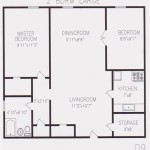Do I Need A Rug In My Bedroom?
The question of whether to incorporate a rug into bedroom decor is a common consideration during interior design planning. There is no definitive "yes" or "no" answer, as the decision hinges on a multitude of factors related to personal preferences, functional necessities, and the specific characteristics of the bedroom itself. Evaluating these factors carefully allows for a well-informed choice that enhances both the aesthetic appeal and practical usability of the space.
Rugs, in their diverse forms, offer a range of benefits that contribute to the overall ambiance and functionality of a bedroom. From providing underfoot comfort to defining specific areas within the room, rugs can play a significant role in transforming a bedroom from a purely functional space into a more inviting and aesthetically pleasing environment. However, these benefits must be weighed against potential drawbacks, such as maintenance requirements and potential allergens accumulation.
Ultimately, determining the necessity of a rug in a bedroom requires a holistic assessment. This assessment should take into account the room's dimensions, existing flooring type, desired aesthetic style, and the occupant's lifestyle and sensitivities. This article will explore the key considerations to help ascertain whether a rug is a suitable and beneficial addition to a specific bedroom.
Comfort and Warmth
One of the primary arguments for including a rug in a bedroom lies in the comfort it provides. Stepping onto a cold, hard floor first thing in the morning can be an unpleasant experience, particularly in colder climates. A rug placed strategically beside the bed offers a soft and warm surface for bare feet, mitigating this discomfort. The material of the rug plays a crucial role in this aspect. Natural fibers like wool are known for their inherent warmth and plushness, while synthetic options like acrylic can mimic the feel of natural fibers at a lower cost.
Beyond immediate comfort, rugs contribute to the overall warmth of a bedroom, both literally and figuratively. A large rug can act as an insulator, helping to retain heat within the room, especially if the existing flooring is tile or hardwood. This can lead to lower energy bills and a more comfortable living environment during colder months. Furthermore, the visual warmth of a rug can transform the ambiance of the room, making it feel cozier and more inviting.
The texture and pile height of the rug also significantly impact comfort. A high-pile rug offers a more luxurious and comfortable feel underfoot but may be more challenging to clean. A low-pile rug is generally easier to maintain and less prone to trapping debris, making it a practical choice for high-traffic areas or for individuals with allergies. The choice between these options depends on a balance between desired comfort levels and maintenance considerations.
Aesthetic Enhancement and Design Cohesion
Rugs are powerful tools for enhancing the aesthetic appeal of a bedroom. They can introduce color, pattern, and texture, adding visual interest to an otherwise plain space. A well-chosen rug can serve as a focal point, drawing the eye and anchoring the furniture within the room. The style of the rug should complement the existing décor, enhancing the overall design scheme.
Rugs can also be used to define specific zones within a larger bedroom. For instance, a rug placed under a seating area creates a distinct space for relaxation or reading. Similarly, a rug can define the sleeping area, visually separating it from other functional areas within the room, such as a dressing area or workspace. This zoning effect can enhance the organization and flow of the bedroom, creating a more functional and visually appealing space.
The size and placement of the rug are crucial for achieving design cohesion. A rug that is too small can appear insignificant and disjointed, while a rug that is too large can overwhelm the space. A general rule of thumb is to choose a rug that extends at least 18-24 inches beyond the sides of the bed. The rug should ideally encompass the entire bed and nightstands, or at least the front two-thirds of the bed. Experimentation with different sizes and placements is often necessary to find the optimal arrangement that complements the room's dimensions and furniture layout.
Practical Considerations: Maintenance and Allergies
While the aesthetic and comfort benefits of a rug are undeniable, practical considerations play an equally important role in determining its suitability for a bedroom. Maintenance is a primary concern, as rugs tend to accumulate dust, dirt, and allergens over time. Regular vacuuming is essential to prevent the buildup of these substances. The frequency of vacuuming depends on factors such as foot traffic, the presence of pets, and the sensitivity of the occupants to allergens.
The material of the rug also affects its maintenance requirements. Natural fibers like wool and cotton can be more susceptible to staining and require specialized cleaning products. Synthetic fibers, on the other hand, are generally more stain-resistant and easier to clean. However, they may not possess the same level of durability or natural warmth as natural fibers. The choice of rug material should be based on a careful assessment of lifestyle factors and maintenance preferences.
For individuals with allergies or sensitivities to dust mites, mold, or pet dander, the presence of a rug can exacerbate their symptoms. Rugs provide a conducive environment for these allergens to thrive. Regularly cleaning the rug, using allergen-reducing vacuum cleaner bags, and considering hypoallergenic rug materials can mitigate these issues. In some cases, choosing a smaller rug that can be easily washed or opting for hard flooring surfaces altogether may be the most appropriate solution.
Beyond the initial cost of the rug, ongoing expenses associated with cleaning and maintenance should be factored into the decision-making process. Professional rug cleaning services can be costly, especially for large or delicate rugs. Investing in a high-quality vacuum cleaner with appropriate attachments can help reduce the need for professional cleaning. Furthermore, implementing preventative measures, such as using doormats to trap dirt and debris before entering the bedroom, can minimize the amount of cleaning required.
In summary, the decision to incorporate a rug into a bedroom requires a comprehensive evaluation of comfort preferences, aesthetic goals, and practical considerations. The benefits of a rug, such as added warmth, enhanced design, and defined space, must be weighed against the potential drawbacks, including maintenance requirements, allergen accumulation, and ongoing costs. By carefully considering these factors, individuals can make an informed choice that optimizes the functionality and visual appeal of their bedroom.

What Size Rug Do I Need For My Bedroom

What Size Rug Goes Under A Bed In My Own Style

What Size Rug Do I Need For My Bedroom

What Size Rug Do I Need For My Bedroom

What Size Rug Do I Need For My Bedroom

What Size Rug Do I Need For My Bedroom

Everything You Need To Know Add A Rug Under King Bed My Homier Home

How To Place A Rug Under Bed Area Placement

Guide To Positioning A Rug In Your Bedroom My Dream

What Size Rug Do I Need For My Bedroom
See Also








